Gesture in Residence: Natalia Kraviec
June 1 – August 16, 2022
Please join us for a public closing reception Tuesday, August 16th from 7-9pm
304 w Crest Ave, Tampa, FL 33603
by appointment through August 16th, 2022 via Instagram message @_jasonlazarus_ /
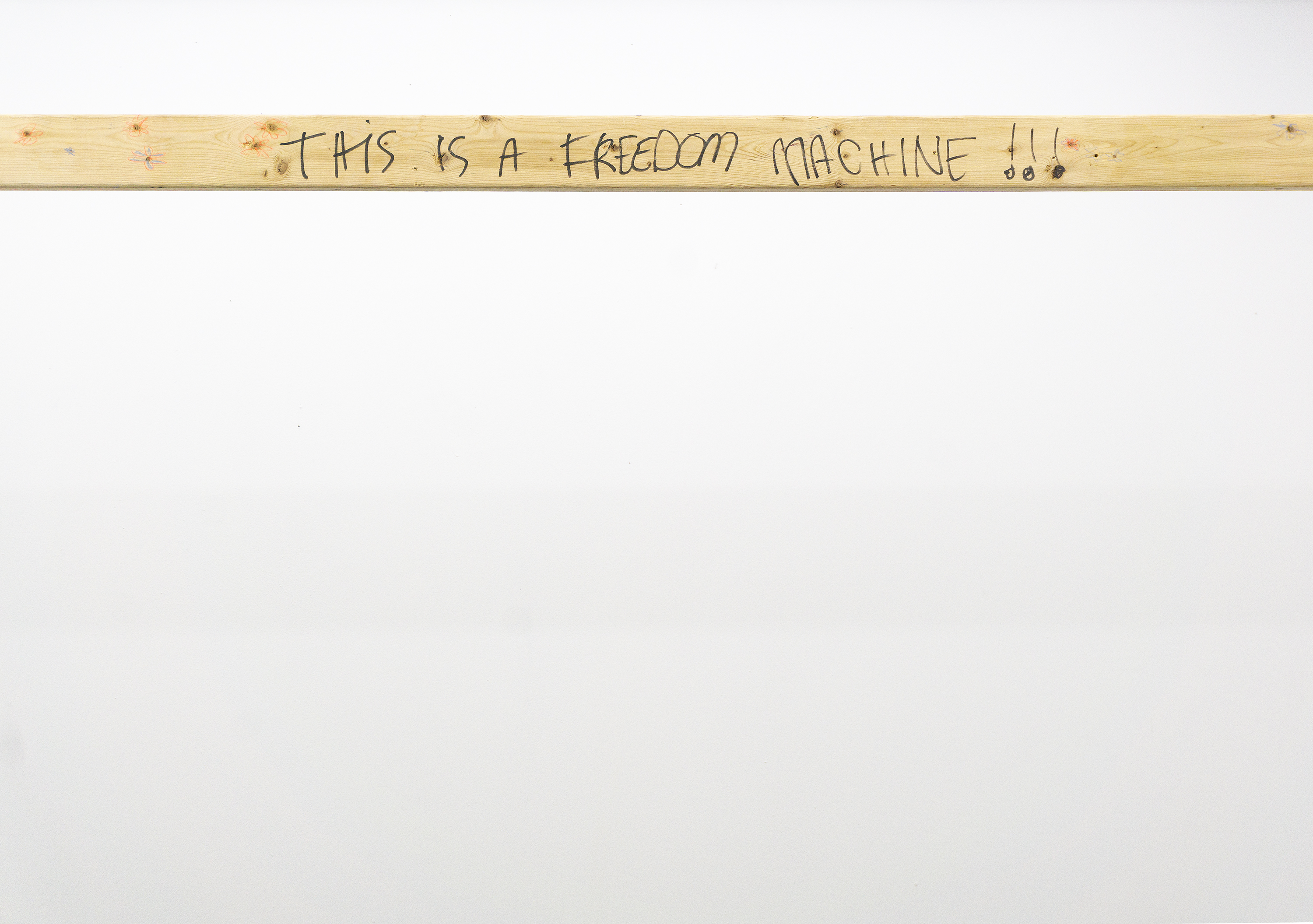
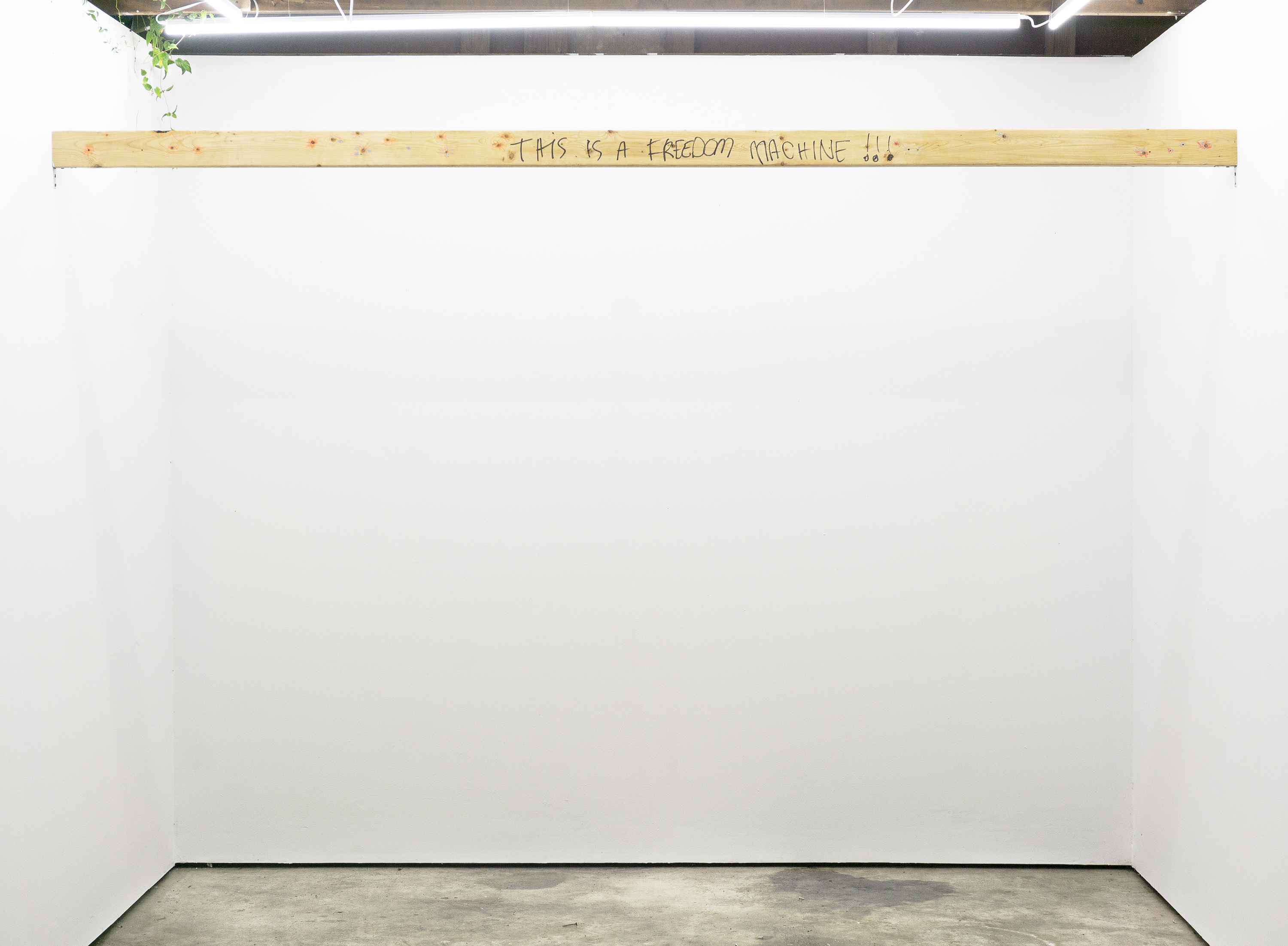
Jason:
Natalia, to exhibit “THIS IS A FREEDOM MACHINE !!!” as Coco Hunday’s first Gesture-in-Residence artist over summer 2022 is, I think, particularly poignant. Can you tell us the origin story of how the inscribed wooden plank manifested in your studio?
Natalia:
Thanks for having me 🙂 I’m really excited talk about this gesture and the influence it had on me during grad school. It’s cool to look back on something that I did in the studio, a spontaneous move on my part that I never would have thought would lead to a conversation outside of my own obsessive thought pattern.
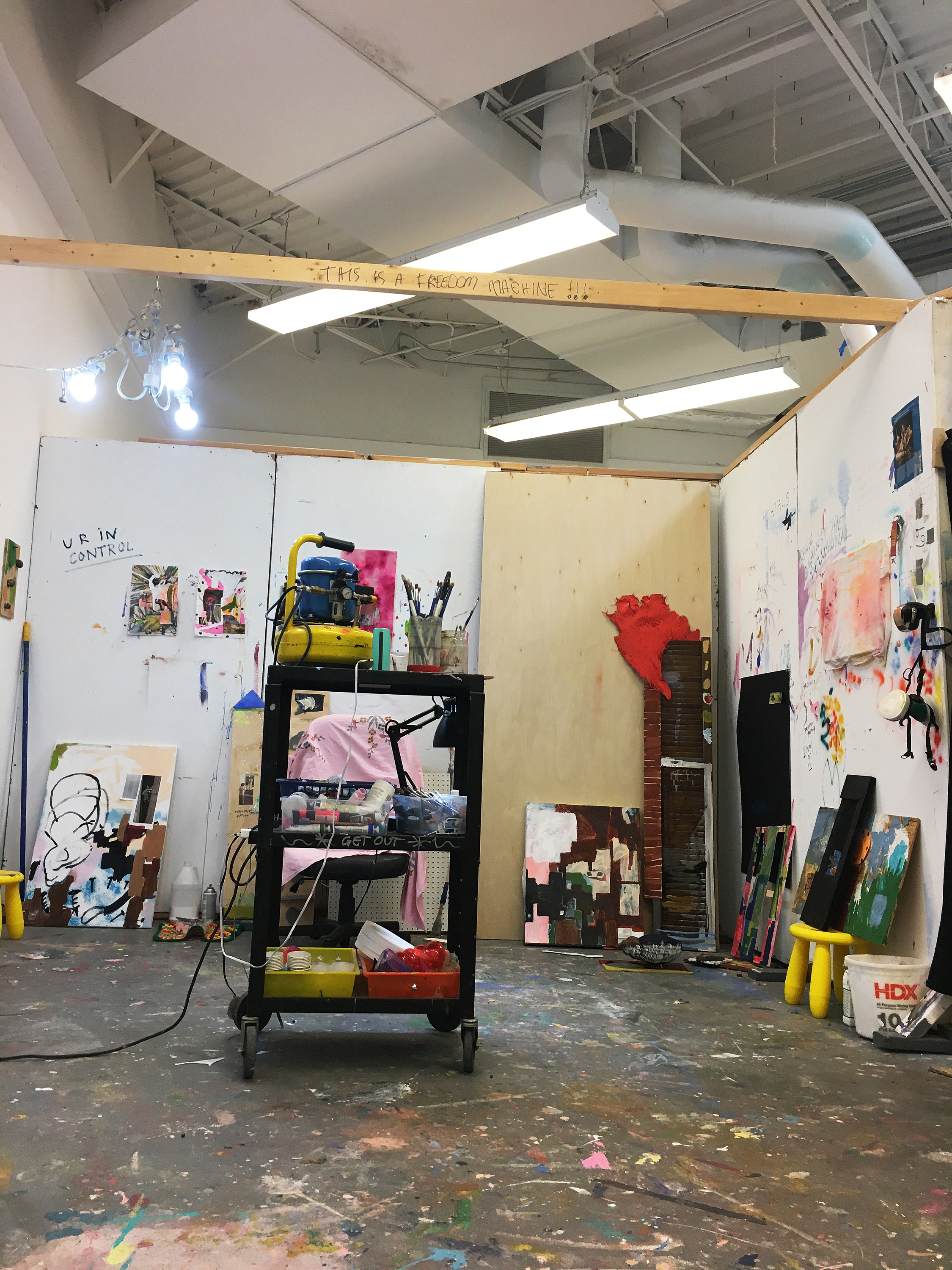
Natalia:
It’s hard to pinpoint the exact moment I made this move but i remember how I was feeling. I never thought I’d be experiencing grad school through something like a pandemic, but there came a point where the I had to mourn the traditional experience and accept the current state of uhhh everything. I was like okay, you have a choice you can think of all the reasons why this situation sucks, or you could really embrace the privilege of uninhibited art making, where space time and community were plenty.
I was working in my studio and I think I was listening to an art podcast where someone mentioned the idea of painting as a freedom machine…I was like WOAH yes that’s the secret sauce. That’s my guiding force, something to remind myself of. That the studio, being an artist, it’s a freedom machine. It’s a magical state of mind when you’re making and not thinking about making.
Jason:
So you accepted the initial context shock of covid, and newly focused on the agency of the studio, which I’m sure was exhilarating. Now that ‘the plank’ had become a companion in your studio, was there another time where it became newly critical?
Natalia:
The biggest shift in my work was the year leading up to the thesis exhibition, and involved navigating personal issues outside of the studio. It is during this period where I really learned to speak out about my needs, with people who I knew before graduate school and continued to be close with. This was during a period over winter break where I had 5 weeks alone in my studio without any outside input or influence. Following this 5 weeks, in the studio, I had a new sense of control and vision about what felt genuine and truly exciting. I stopped seeking external validation and something got freed up. I found my agency.
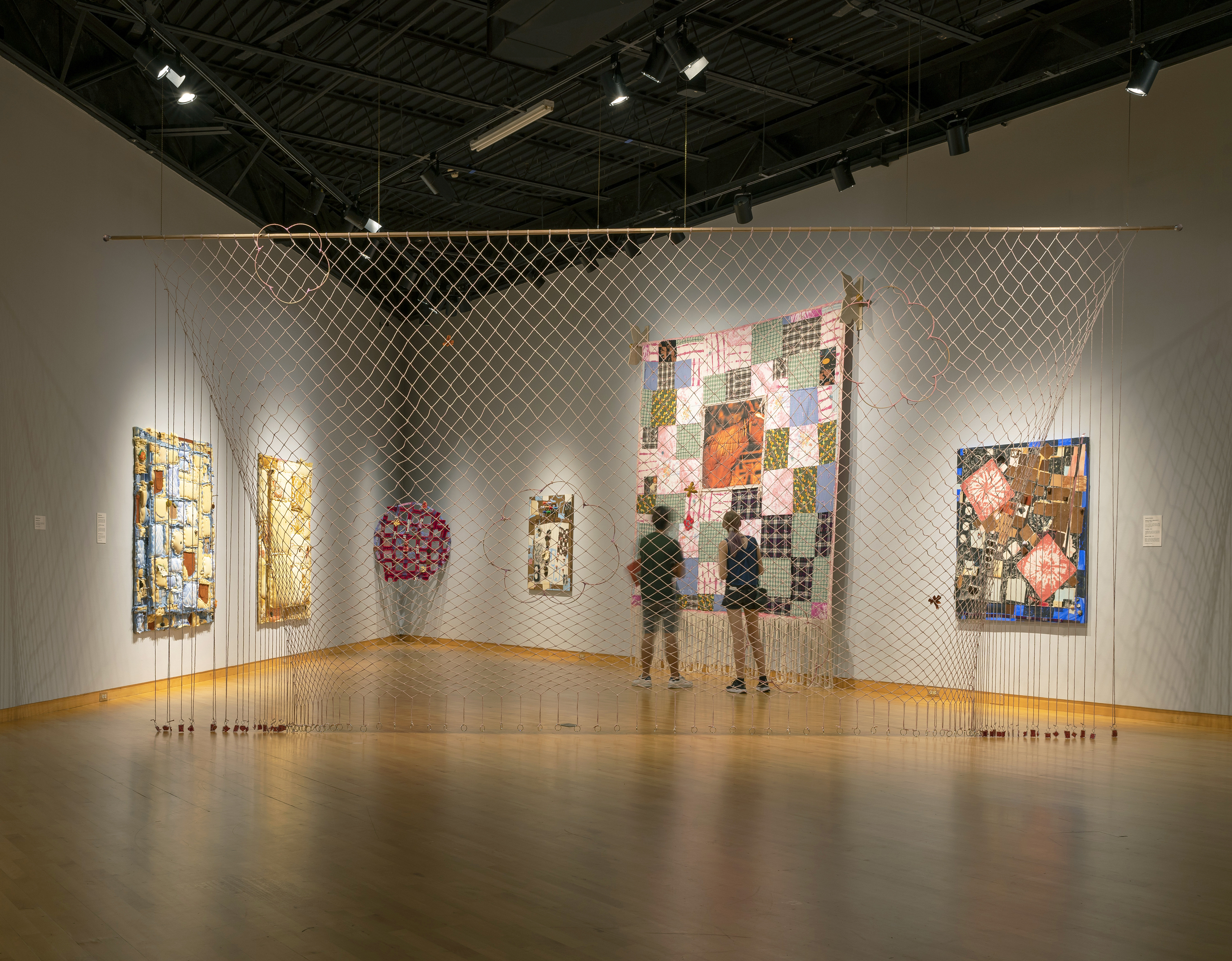
Jason:
As the ‘plank’ is no longer in your studio as your motivational sign, and you are now settling into your first-year post-MFA, does the reading change for you from afar?
The main reason I had the sign initially was to work in the studio and be ‘in the moment,’–to not overintellectualize or over-analyze, to avoid studio paralysis.
Post-grad school, the sentiment of the freedom machine has changed to a grappling with my values outside of the studio. I wrote out my values outside of my studio as a way to newly anchor my post-grad life and to investigate the intention of these values. Now the sign reminds me to engage the question of my life trajectory, and taking ownership and agency after the monologues of art school.


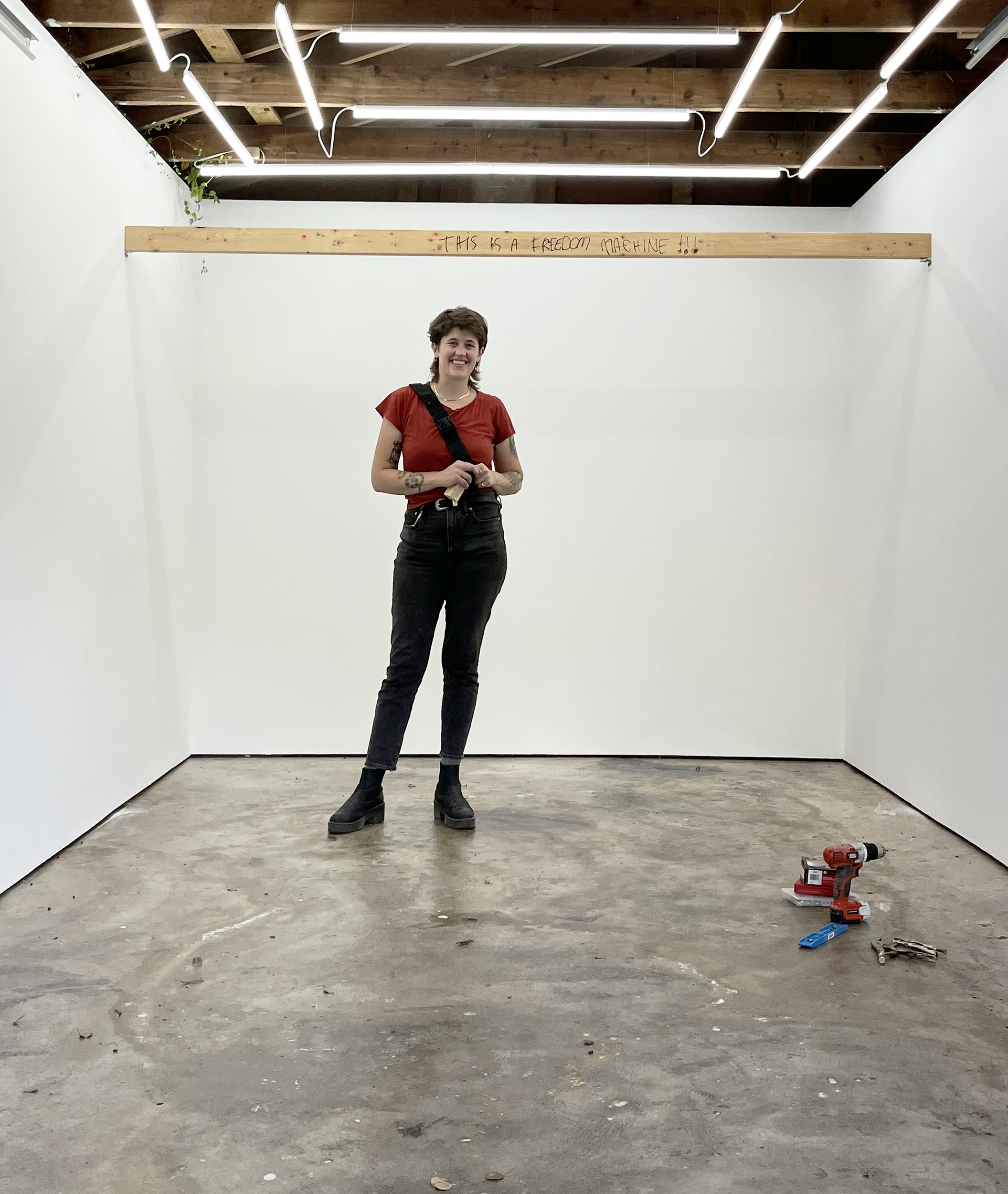
Jason:
Natalia, I’ve always been profoundly affected by the piece–it seems like a portal to not only your interior landscape but what I think many artists must feel (on a good day in the studio– this is a freedom machine and it is taking me places of my infinite desire!!!) or need to be reminded of constantly– c’mon c’mon this is a freedom machine stop getting stuck and overthinking.
It’s also the constant search for agency which I think for an artist in an MFA program is challenging. (To be clear for readers, Natalia recently received her MFA from USF where I teach). Put another way, I felt, all of a sudden, emotionally connected to your position as a student and it felt healthy and productive to feel this. It made me want to share the ‘plank’ widely as I think its powerful in a number of ways.
Libbi:
Natalia, I had the pleasure of seeing the work installed in person earlier this month during a visit to Florida. What isn’t immediately evident through the photos I’d seen before were some new developments, namely some pink and blue flowers made in what seems like crayon or oil pastel. I was curious as to whether this was added during the plank’s life in your studio, or during/before install in the gallery. And to follow, I wanted to know what attracts you to using this flower motif within your work?
Natalia:
There are so many patterns that show up in my work. I love floral motifs, anything decorative, patterns on the cusp of a bad taste but a specific element of charm. I’m subconsciously drawn to that shape, the simplified version of a flower with a circle surrounded by ovals or some variation. I’ll be walking around my house or outside and I will mentally fill in holes with the outline and imagine it as that flower. And then sometimes I literally do it. In a lot of my sculptural paintings and Like specifically with the beam, I saw the knots in the wood and was like you know what would be the perfect addition? Flowers, easy choice. And ive embraced my impulse to embellish. So it was added after the fact, which is not uncommon for my work, and exciting that you were able to get a closer interaction and notice the little color shifts and nuances in the beam. I move it to a new location, out of its original context and it (whatever that may be) has a new freedom to be something different, whatever I feel it needs or wants in that moment, or doesn’t. They don’t have to stay in a fixed state of conservation to retain a value or whatever is associated with archivalness. Because most of the materials I use will degrade over time and faster than something designed to last like plastic, there is a fleeting nature to the work and how connect. I feel bound to the objects I make and collect, not in a emotional way necessarily but it’s form and the different ideas it can convey through context and alteration.
Jason:
On a closing note, I’ve always been profoundly affected by the piece–it seems like a portal to not only your interior landscape but what I think many artists must feel (on a good day in the studio– this is a freedom machine and it is taking me places of my infinite desire!!!) or need to be reminded of constantly– c’mon c’mon this is a freedom machine stop getting stuck and overthinking.

Jason:
It’s also the constant search for agency which I think for an artist in an MFA program is challenging. (To be clear for readers, Natalia recently received her MFA from USF where I teach). Put another way, I felt, all of a sudden, emotionally connected to your position as a student and it felt healthy and productive to feel this. It made us want to share the ‘plank’ widely as we think its powerful in a number of ways.